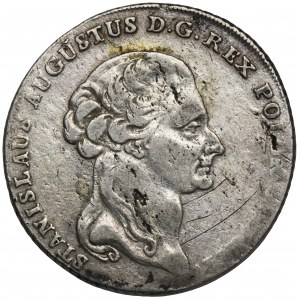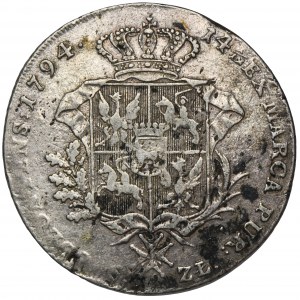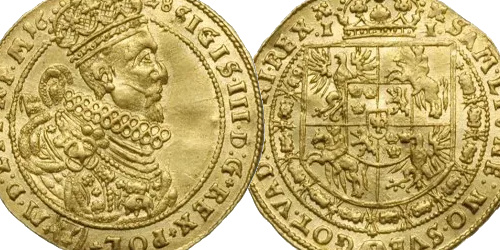Variety with colon after POLON, oak leaf overlaps the shield of the coat of arms.
Edge with traces of removal from the frame. Background with scratches. Sheet metal defects, but detail correct.
The first vintage from the issue of so-called light thalers, introduced after the change of the mint rate.
Estimated mintage of 47,873 pieces.
Weight 24.84 g
The last issue of thalers was in 1794-1795, at that time bilsko 182,000 pieces were minted. The new minting rate lowered the bullion sample and weight, so much so that these thalers became known as "light thalers." During the Kosciuszko Insurrection, the needs of the State were so great that it was decided to use stamps with the date 1794 in the following year as well. A total of seven different reverse stamps were used.
During the first two years of the reign of Stanislaw Augustus, municipal mints operated in Gdansk and Torun (1765 and 1766). However, these cities were forced to close them. This was because the king intended to recover from the monetary chaos left over from the Saxon era and introduce a new monetary system. Its basis was to be the Dutch ducat and the thaler minted from the Cologne fine (pure silver) in 10 pieces. The reform came into effect in 1766, and the monetary circulation of the Republic included fine and full-value coins: ducats, thalers, zlotys, pennies and their fractions and multiples. The fact that these were full-value coins caused them to be pulled from the market and melted down into lower-quality Prussian coins. For this reason, the monetary system was revised twice, including changing the minting rate (1787 and 1794). During the reign of Stanislaw Augustus, two state mints worked: the Cracow and Warsaw mints.









